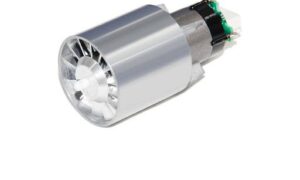Hearing aids, an indispensable tool for individuals experiencing hearing loss, have evolved significantly over the years. From their humble beginnings to the sophisticated devices we have today, hearing aids have transformed countless lives. In this comprehensive guide, we’ll explore the types of hearing aids, how they work, the benefits they offer, and much more.
Introduction
Definition of Hearing Aids
Hearing aids in Auckland are electronic devices designed to amplify and modulate sound, helping individuals with hearing loss experience clearer and more audible sounds.
Importance of Hearing Aids
The significance of hearing aids extends beyond improved hearing; they play a pivotal role in enhancing communication, social interactions, and overall well-being.
Types of Hearing Aids
Behind-the-Ear (BTE) Hearing Aids
BTE hearing aids are positioned behind the ear and are suitable for various degrees of hearing loss. They are known for their durability and versatility.
In-the-Ear (ITE) Hearing Aids
ITE hearing aids are custom-fit devices that sit discreetly within the ear. They are popular for their comfort and cosmetically appealing design.
Receiver-in-Canal (RIC) Hearing Aids
RIC hearing aids have a small receiver in the ear canal connected to the main body behind the ear. This design provides a natural sound experience.
Completely-in-Canal (CIC) Hearing Aids
CIC hearing aids are tiny devices placed entirely within the ear canal, making them nearly invisible. They are suitable for mild to moderate hearing loss.
III. How Hearing Aids Work
Microphones and Sound Processing
Hearing aids use advanced microphones to pick up sounds, and sophisticated processors amplify and process these sounds based on the individual’s hearing needs.
Amplification Mechanism
The core function of hearing aids is to amplify sounds selectively, focusing on frequencies where hearing loss is most pronounced.
Speaker and Receiver
The amplified sound is delivered to the ear through a speaker or receiver, custom-tailored to suit the wearer’s unique hearing profile.
Benefits of Using Hearing Aids
Improved Communication
Hearing aids facilitate better communication by ensuring that individuals can hear and understand speech more clearly.
Enhanced Quality of Life
The use of hearing aids is linked to improvements in overall quality of life, including increased participation in social activities and reduced feelings of isolation.
Social and Emotional Well-being
By promoting effective communication, hearing aids contribute to positive social interactions and emotional well-being.
Common Misconceptions About Hearing Aids
Only for Elderly Individuals
Contrary to popular belief, hearing aids are not exclusive to the elderly; people of all ages can benefit from them.
Hearing Aids Are Uncomfortable
Modern hearing aids are designed with comfort in mind, featuring ergonomic designs and customizable fittings.
Hearing Aids Solve All Hearing Problems
While highly beneficial, hearing aids may not completely restore normal hearing and may require adjustment periods.
Selecting the Right Hearing Aid
Consultation with Audiologist
Audiologists play a crucial role in recommending the most suitable hearing aid based on individual hearing profiles.
Consideration of Lifestyle
Factors such as an individual’s daily activities and preferences are considered to ensure the chosen hearing aid aligns with their lifestyle.
Technology Features
Advancements in technology offer a range of features, including noise reduction, directional microphones, and connectivity options, enhancing the overall hearing experience.
Maintenance and Care Tips
Cleaning and Storage
Proper cleaning and storage practices prolong the lifespan of hearing aids and maintain optimal performance.
Battery Replacement
Regularly replacing hearing aid batteries is essential for uninterrupted functionality.
Regular Check-ups
Scheduled check-ups with audiologists ensure that the hearing aids are functioning correctly and adjustments are made if necessary.
Overcoming Stigma Around Hearing Aids
Addressing Societal Perceptions
Educational initiatives are vital in dispelling misconceptions and fostering a supportive environment for those with hearing aids.
Encouraging Open Conversations
Open discussions about hearing loss and the benefits of hearing aids contribute to breaking down societal stigmas.
Advocacy for Hearing Health
Community involvement and advocacy efforts can play a role in promoting awareness about hearing health and the positive impact of hearing aids.
Technological Advancements in Hearing Aids
Bluetooth Connectivity
Modern hearing aids often feature Bluetooth connectivity, allowing users to connect with smartphones and other devices for a seamless audio experience.
Artificial Intelligence Integration
Artificial intelligence enhances hearing aids by adapting to the user’s preferences and environments, optimizing sound quality.
Customization Options
Users can personalize their hearing experience through customizable settings, ensuring comfort and satisfaction.
Insurance Coverage for Hearing Aids
Understanding Insurance Policies
Navigating insurance coverage for hearing aids requires a clear understanding of policies and available benefits.
Advocacy for Improved Coverage
Advocacy efforts seek to improve insurance coverage for hearing aids, making them more accessible to a broader population.
Financial Assistance Programs
Various financial assistance programs exist to support individuals in acquiring hearing aids, ensuring affordability.
Hearing Aid User Experiences
Testimonials and Stories
Real-life stories of individuals benefiting from hearing aids serve as powerful testimonials, inspiring others to seek help.
Overcoming Challenges
Understanding and sharing the challenges individuals face with hearing loss and how hearing aids help overcome them.
Celebrating Successes
Highlighting success stories and milestones achieved by individuals with hearing aids emphasizes the positive impact of these devices.
Future Trends in Hearing Aid Technology
Miniaturization and Discreet Designs
Advancements aim to make hearing aids smaller and more discreet without compromising performance.
Enhanced Noise Filtering
Improved technology focuses on better noise filtering, enhancing the user’s ability to hear in challenging environments.
Integration with Smart Devices
The integration of hearing aids with smart devices continues to evolve, providing users with additional functionalities and convenience.
Conclusion
Recap of Key Points
Hearing aids play a crucial role in enhancing the lives of individuals with hearing loss, offering improved communication, emotional well-being, and a higher quality of life.
Encouragement for Seeking Help
Encouraging those with hearing difficulties to seek professional help and explore the transformative benefits of hearing aids.
Embracing the Benefits of Hearing Aids
Promoting a positive perspective on hearing aids, emphasizing their positive impact on daily life and relationships.
FAQs
Can hearing aids restore normal hearing?
Hearing aids can significantly improve hearing, but they may not fully restore normal hearing.
How often should I get my hearing aids checked?
Regular check-ups with an audiologist are recommended, typically every six months, to ensure optimal performance.
Are there any side effects of using hearing aids?
While generally safe, some users may experience mild discomfort or adjustments during the initial usage period.
What is the average lifespan of a hearing aid?
The lifespan varies, but with proper care and maintenance, hearing aids can last five to seven years on average.
Do I need two hearing aids if I have hearing loss in only one ear?
In many cases, using two hearing aids provides a more balanced hearing experience, even if hearing loss is present in only one ear.



































